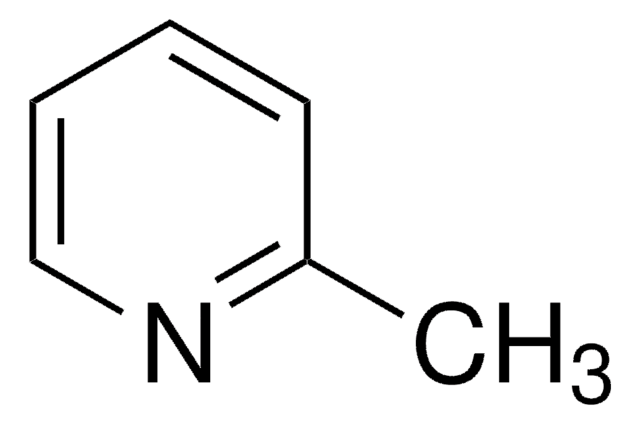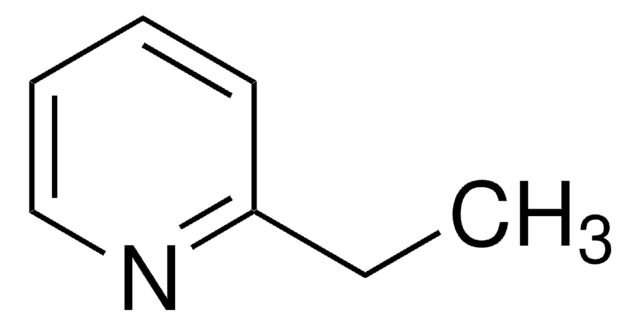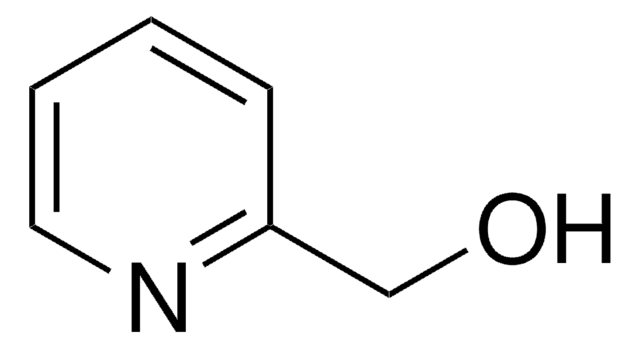109835
2-Methylpyridine
98%
Sinonimo/i:
2-Picoline, α-Picoline, 2-Methylpyridine, NSC 3409
About This Item
Prodotti consigliati
Densità del vapore
3.2 (vs air)
Tensione di vapore
10 mmHg ( 24.4 °C)
Saggio
98%
Temp. autoaccensione
995 °F
Limite di esplosione
8.6 %
Indice di rifrazione
n20/D 1.500 (lit.)
P. eboll.
128-129 °C (lit.)
Punto di fusione
−70 °C (lit.)
Solubilità
H2O: freely soluble
alcohol: miscible
diethyl ether: miscible
Densità
0.943 g/mL at 25 °C (lit.)
Stringa SMILE
Cc1ccccn1
InChI
1S/C6H7N/c1-6-4-2-3-5-7-6/h2-5H,1H3
BSKHPKMHTQYZBB-UHFFFAOYSA-N
Cerchi prodotti simili? Visita Guida al confronto tra prodotti
Categorie correlate
Applicazioni
Avvertenze
Danger
Indicazioni di pericolo
Classi di pericolo
Acute Tox. 3 Dermal - Acute Tox. 4 Inhalation - Acute Tox. 4 Oral - Eye Dam. 1 - Flam. Liq. 3 - Skin Corr. 1C - STOT SE 3
Organi bersaglio
Respiratory system
Codice della classe di stoccaggio
3 - Flammable liquids
Classe di pericolosità dell'acqua (WGK)
WGK 1
Punto d’infiammabilità (°F)
84.2 °F - closed cup
Punto d’infiammabilità (°C)
29 °C - closed cup
Dispositivi di protezione individuale
Eyeshields, Faceshields, Gloves, type ABEK (EN14387) respirator filter
Certificati d'analisi (COA)
Cerca il Certificati d'analisi (COA) digitando il numero di lotto/batch corrispondente. I numeri di lotto o di batch sono stampati sull'etichetta dei prodotti dopo la parola ‘Lotto’ o ‘Batch’.
Possiedi già questo prodotto?
I documenti relativi ai prodotti acquistati recentemente sono disponibili nell’Archivio dei documenti.
I clienti hanno visto anche
Il team dei nostri ricercatori vanta grande esperienza in tutte le aree della ricerca quali Life Science, scienza dei materiali, sintesi chimica, cromatografia, discipline analitiche, ecc..
Contatta l'Assistenza Tecnica.









